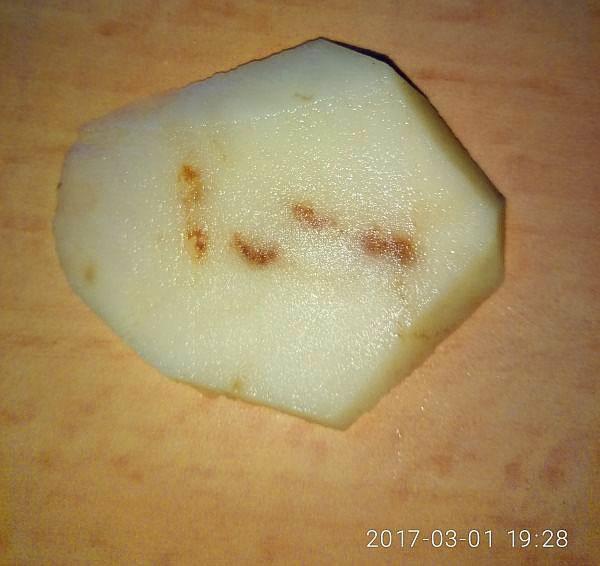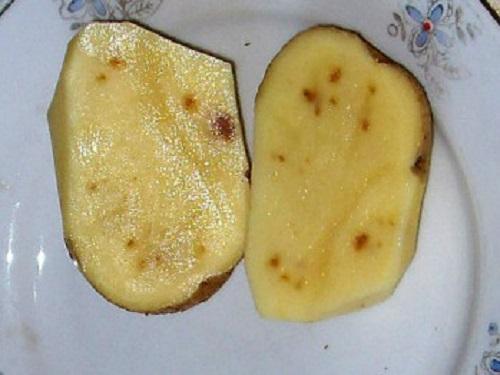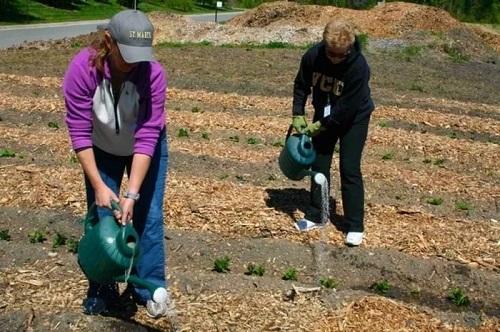Glandular spot of potatoes: causes of the disease, preventive measures
 Good day. Potato tubers (the cut is shown in the photo) have dark streaks throughout the tuber. The seed was changed, the planting site (within the site) too. Can you please tell me what this disease is and how to deal with it? Thank you in advance.
Good day. Potato tubers (the cut is shown in the photo) have dark streaks throughout the tuber. The seed was changed, the planting site (within the site) too. Can you please tell me what this disease is and how to deal with it? Thank you in advance.Judging by the photo, potato tubers are affected by glandular spot. This disease is also called tuber rust.
Characteristics and causes of the onset of the disease

Glandular spot appears as brown (rusty) spots on potato flesh. The color of the spots can vary and acquire different shades - from light amber to brownish red. Lesions are most often located in a circle, closer to the core, but are scattered throughout the tuber. The spots do not have a clear shape, the edges are vague. Further rotting of the affected part of the pulp does not occur: it simply becomes hard, and the starch grains are destroyed.
A characteristic feature of the disease is that it is impossible to identify it during external examination - rust is visible only when the tuber is cut.
The causes of the appearance of the disease are changes in the composition of the soil and weather conditions, which entail disruptions in the development of potatoes and their nutrition. These include:
- high air temperature;
- lack of moisture in the soil (drought);
- excessive amounts of iron and aluminum in the soil;
- lack of phosphorus.
Rusty tubers are not suitable for consumption, but they can be used for planting (the disease does not pass to the next harvest).
Rusty spot appears and develops only during the period of growth of potato bushes; during storage, the disease does not spread further. Most often, rustiness affects plantings in hot and dry weather, but it can also be with sufficient soil moisture if the air temperature reaches 30 degrees Celsius. In a cold summer, when the soil temperature drops to 18-11 degrees, the disease does not manifest itself.
How to protect potatoes from rusting?

First of all, for planting, zoned varieties that are resistant to this disease should be used. In addition, it is necessary to ensure adequate nutrition of the tubers during growth. To do this, periodically fertilize the soil. nitrogen fertilizers (organics, nitroammofosk), and also introduce phosphorus in a mobile form (superphosphate) during the entire period of development. Liming of the site works well against rust.
Do not forget about timely watering of plantings on dry days, as well as a decrease in soil temperature.
It has been noticed that rusty spots on potatoes appear less often if they are planted in an area where lupine, alfalfa, rapeseed or oil radish used to grow.
everything is clear and accessible